- Home
- slideshows
- miscellaneous
- A crop of new startups has popped up promising to make going to the doctor easier and cheaper. I put them to the test.
A crop of new startups has popped up promising to make going to the doctor easier and cheaper. I put them to the test.
I got my glasses prescription renewed online with Warby Parker

I updated my skin-care routine with Curology
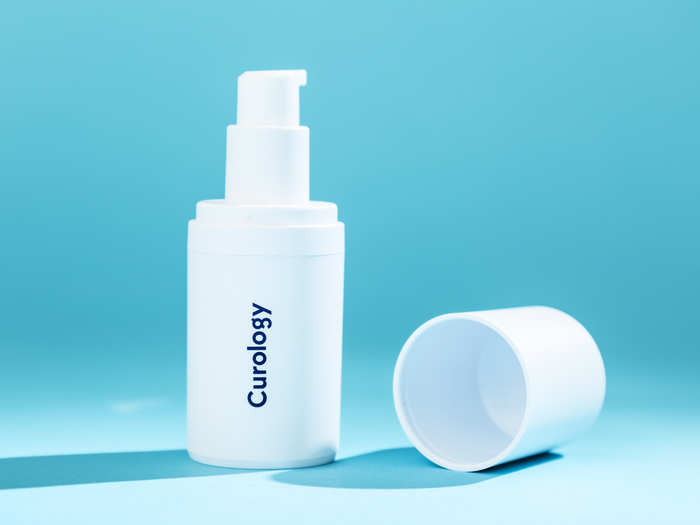
I'd been meaning to get my skin more under control for a while, so I figured I'd test out Curology, a company that prescribes personalized acne treatments online. The process was pretty simple, once I got to Curology's website. I started the free trial, shared my history with acne products and other prescriptions/health conditions I might have.
I mentioned my concerns about using certain acne treatments given my past experience, sent in some photos, and off the assessment went to a medical professional who would review and prescribe me a course of action.
A few days later, my solution arrived in the mail along with moisturizer and cleanser. The medical provider who reviewed my case also gave me over-the-counter options for cleansers and a moisturizer with sunscreen, something I'd been meaning to add to my routine.
Time: 10 minutes to do the exam, I got my prescription the next day.
Price: $5 for the initial one-month free trial bottle, $40 for a two-month supply of the solution after that.
Pros: It's nice to have a plan, and it's nice to have a chance to follow-up via Curology's website to share how I'm progressing.
Cons: My skin seems worse than it did before. I'm guessing I'm just in the throes of getting started on a new plan, and I've been able to check in periodically with my medical professional about it, something I might've had a harder time doing in a traditional dermatology practice.
The verdict: In dermatology, it seems that virtual, direct-to-consumer approaches have the advantage. I avoided the much higher cost of an office visit, and it didn't take more than a few minutes to get me started on a care plan that I'd been neglecting.
I visited Tia's first clinic for my annual well-woman exam
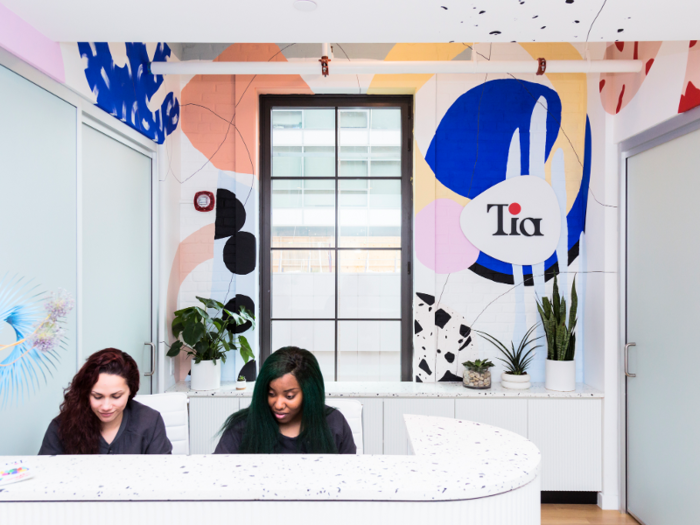
When I heard that women's health startup Tia was opening a New York clinic, which takes insurance and comes with a $150 annual fee, I figured I should give it a try.
After signing in through a tablet at the front office, I was led to an exam room where providers asked me about my medical history and what had brought me in today. The providers cast the notes onto a screen in the room, which was a fun way to visualize my health. I could also look over their shoulders to see their screens.
Time: From start to finish, I was at the clinic for about an hour.
Price: $150 annual fee, with insurance covering the underlying visits. The fee goes toward services like the messaging and booking platform, programming at Tia, and access to group wellness events.
Pros: I never had to wait once I stepped foot into the clinic. The care team listened to my concerns and offered up solutions, but didn't pressure me into any one course of action.
Cons: Demand for Tia's services were more than the founders anticipated, so getting an appointment as a new member isn't quite as easy as it will ideally be one day (For the purposes of the review, I had some help in booking). I also had a hard time figuring out how to follow up with the healthcare provider who had done my exam, which will ideally be fixed when Tia's care team messaging platform launches in a few weeks.
The verdict: I'll be excited when it's all up and running, it certainly was among the better gynecology appointments I've been to. I'm excited to attend some of the events, which are included in the yearly membership fee.
I renewed my contact prescription through Simple Contacts
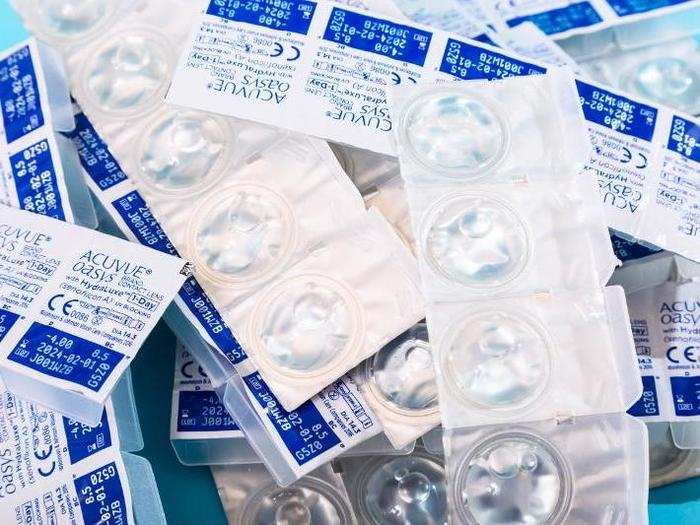
Simple Contacts, a startup that sells contact lenses online, also offers a contact lens prescription check exam. I decided to try it out to renew my contact lens prescription.
After plugging in my old, expired prescription from my eye doctor, I got started with the exam. It asked me questions about my health, how I was seeing, and whether I'd had headaches. I was asked to set up a few feet away from my phone and turn on my microphone and camera, which I'd use to read off letters as part of the exam.
My contacts arrived about a week later.
Time: About 15 minutes, much of which was spent setting up the screen a few feet away from me. My prescription arrived the next day.
Price: The exam costs $20, much less than what I might pay for a contact lens fitting at the eye doctor. My health plan doesn't cover the cost of a fitting. A year's supply of my contacts cost $776, less than what I had paid for a year's supply in 2017.
Pros: It was simple and less expensive than a traditional contact lens fitting. The price of my contacts themselves ended up being less as well.
Cons: Like with Warby Parker, the only drawback would be that I should still go in-person to check in on my eye health, something the online system doesn't cover.
The verdict: I should probably still go in for an eye exam, but this was nice as a way to stretch out my older visit. I know it's a pain and expensive to go in person, but it's probably worth it to be super sure I have the right set of contacts in.
I popped into One Medical for a quick check-in
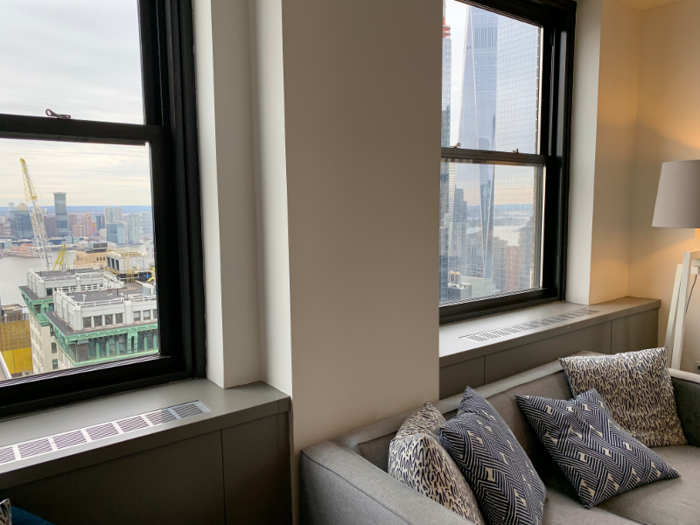
Thinking of my own healthcare needs, I decided that One Medical, which charges an annual fee and offers same- or next-day appointments with doctors or other healthcare professionals that users can book online, would be my best bet for primary care over a model that charges a monthly rate.
I don't go to the doctor often, but after feeling some pain in my knee, I booked a 20-minute visit online after signing up as a member. I went in a few days later for an appointment.
Time: I spent about 40 minutes at the office.
The price: $199 annual fee, plus however much my insurer charges for in-person visits until I hit my deductible.
Pros: It was simple to book online, the views at the office were stunning, my provider was helpful, and it was easy to follow up with her via One Medical's messaging platform.
Cons: I didn't have the smoothest time booking an appointment after clicking some wrong buttons and almost having to reschedule for a different time slot. I was also a little bummed that I couldn't book an appointment with a doctor at the office that was most convenient for me.
The verdict: To be determined. I'm anxious to see how big my bill will be for the check-in visit.
Going forward, I'm interested to test out some of the more virtual features to see if I can avoid getting hit with a big office-visit bill, given the high deductible health plan I'm on.
I got my teeth cleaned at DNTL, a 'walk-in dental bar'
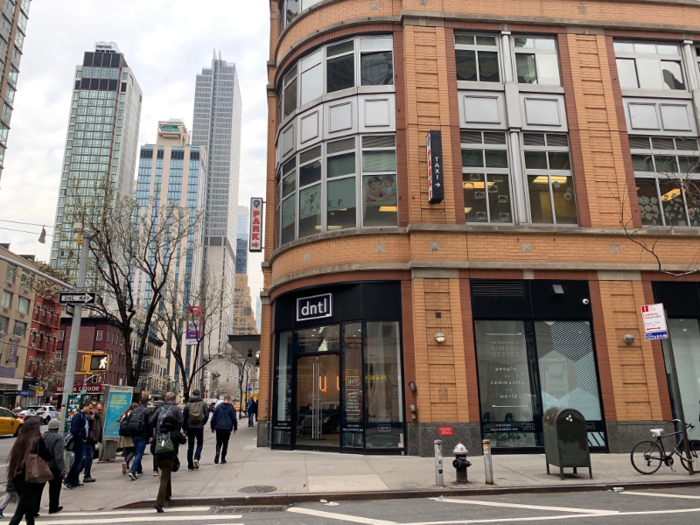
When I first heard about DNTL, which calls itself a "walk-in dental bar," I was curious what might be in store with a visit. To me, it sounded like a blow bar or nail bar — as if cleaning your teeth was as simple as getting your hair styled or a manicure. I booked an appointment online for the following week, though there were times available as early as the same day I was booking.
Time: I spent about 50 minutes at the office.
Price: My cleaning was covered under my dental plan.
Pros: It was certainly one of the most comfortable dental visits I've done. The dental chair had a massage feature. I watched TV during the visit. I never had to wait. There was a blanket I could drape over myself during the cleaning. I was given a hot towelette for my hands and face when it was all done.
Cons: Technology wise, there didn't seem to be too much that distinguishes it from a traditional dental practice.
The verdict: I think I might stick with it, especially since it's the same price.
I worked toward a whiter smile with SmileDirectClub
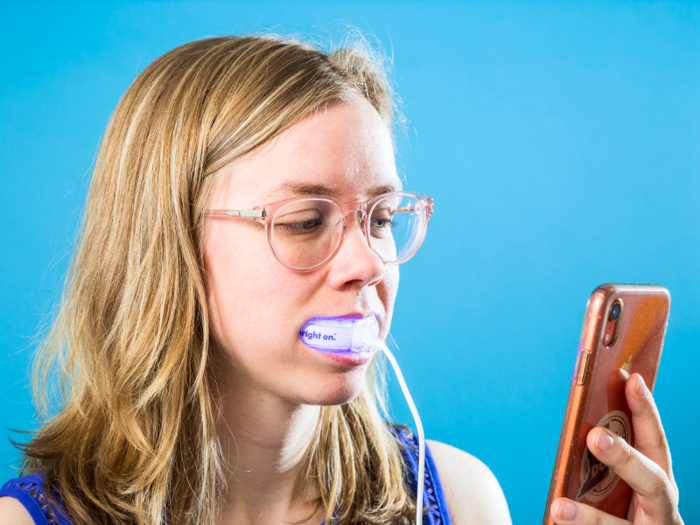
Teeth-straightening was one of the first services to be provided by virtual healthcare companies. And SmileDirectClub is one of the industry's pioneers. The company is currently valued at $3.8 billion after an infusion of $380 million in 2018, and is reportedly planning to go public.
The company also has big physical expansion plans in the works with CVS Health, and is now accepted by Aetna and UnitedHealthcare.
My teeth were straightened out through two rounds of braces in middle school and high school, so I couldn't test out that aspect of the service. Instead, I tested out what it was like to use the service by buying a whitening kit, which includes pens and an LED-light mouthpiece meant to accelerate the process.
Time: I'm supposed to spend 20 minutes a day with whitener on my teeth for a week, half of the time using the LED device. (In reality, I've committed about 10 minutes a day).
Price: With shipping, $86 for a year's supply of pens and the LED mouthpiece.
Pros: The whitening solution that comes in the pens is the same material as I might find in the doctor's office, and other whitening systems applied at the office also use LED lights for longer periods of time. The LED light plugs into my phone. I called my typical dentists office and they told me a whitening would cost $350, so this was much cheaper. It was easy to apply the solution and slip on the mouthpiece.
Cons: It sounds like this is not a research-backed way to get whiter teeth. Studies have shown the light is not that useful in whitening teeth over simply using the solution.
The verdict: While it was fun to test out the process and use the LED mouthpiece, I likely won't pay for it again, especially now that I know the LED bit might not be helping.
Side by side, here's how much the new startups cost when compared to the traditional services they're meant to disrupt.
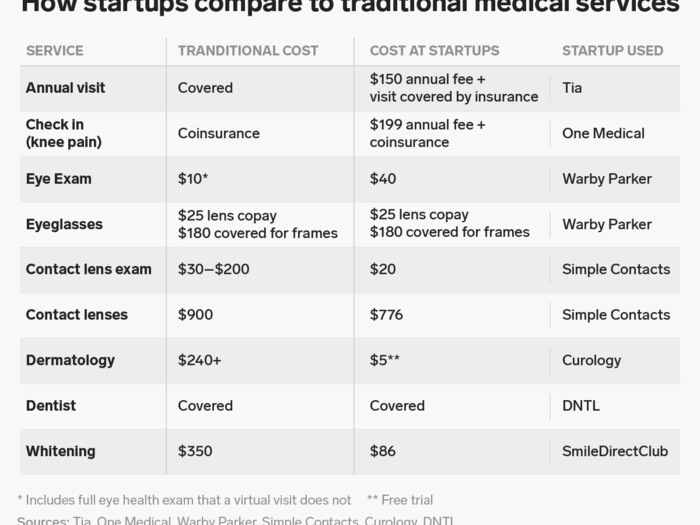
Conclusion

I managed to get all my major appointments done in 2 weeks, and that's exciting. Some took just a few minutes, while others like my visit at Tia or my trip to One Medical had me chatting with my doctor for an hour and 40 minutes, respectively.
With the exception of DNTL, all of the virtual or disruptive services came with a price tag, most of which were higher than if I'd just gone through my traditional doctor. The exceptions were Simple Contacts, which turned out to be cheaper, and Curology.
What's cool is that it seems as if these newer entrants are setting a higher bar, especially in a competitive market like New York.
There's still a lot to be worked out. I'd love to see more follow-ups. (And I'm not talking about surveys that each place inevitably asked me to fill out about my experience.)
Popular Right Now
Popular Keywords
Advertisement